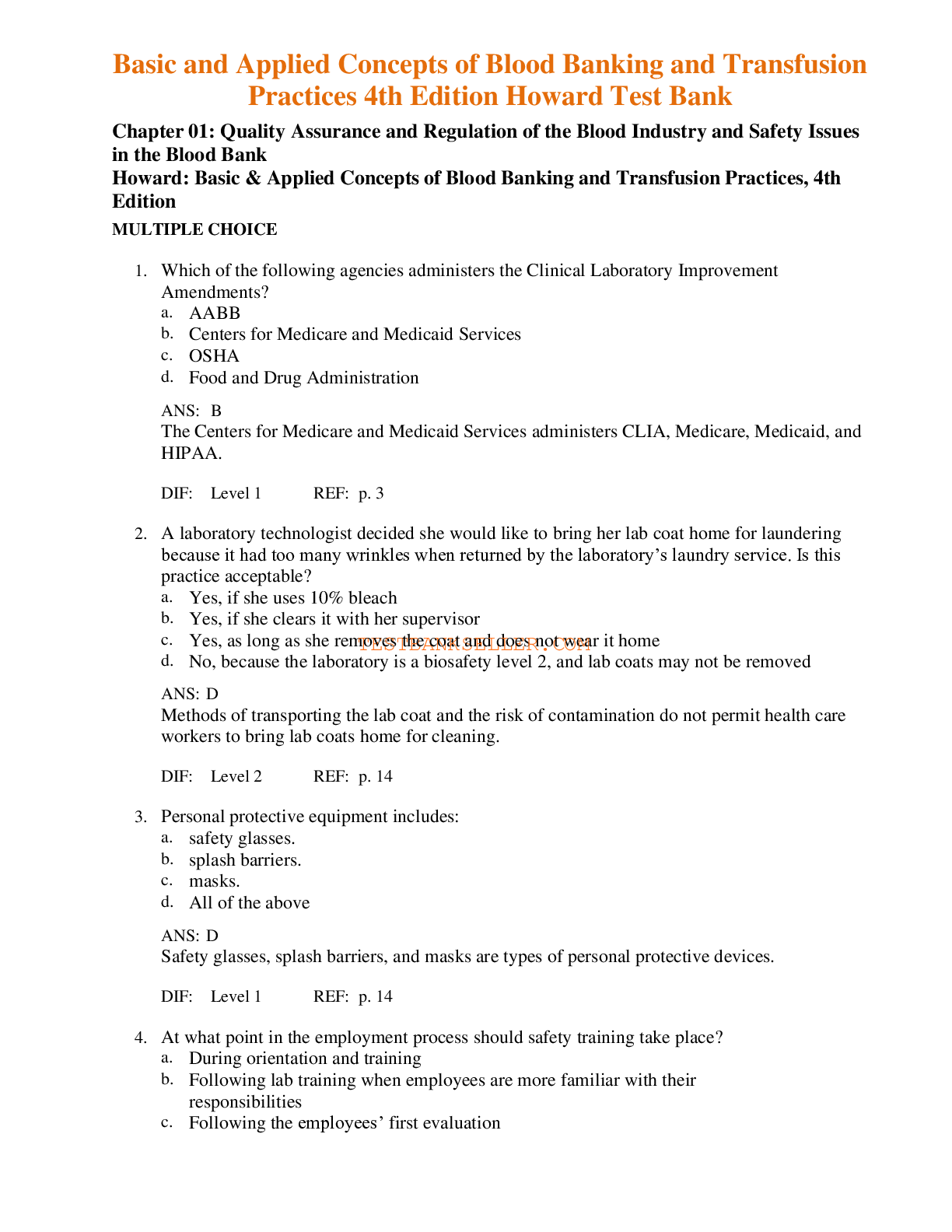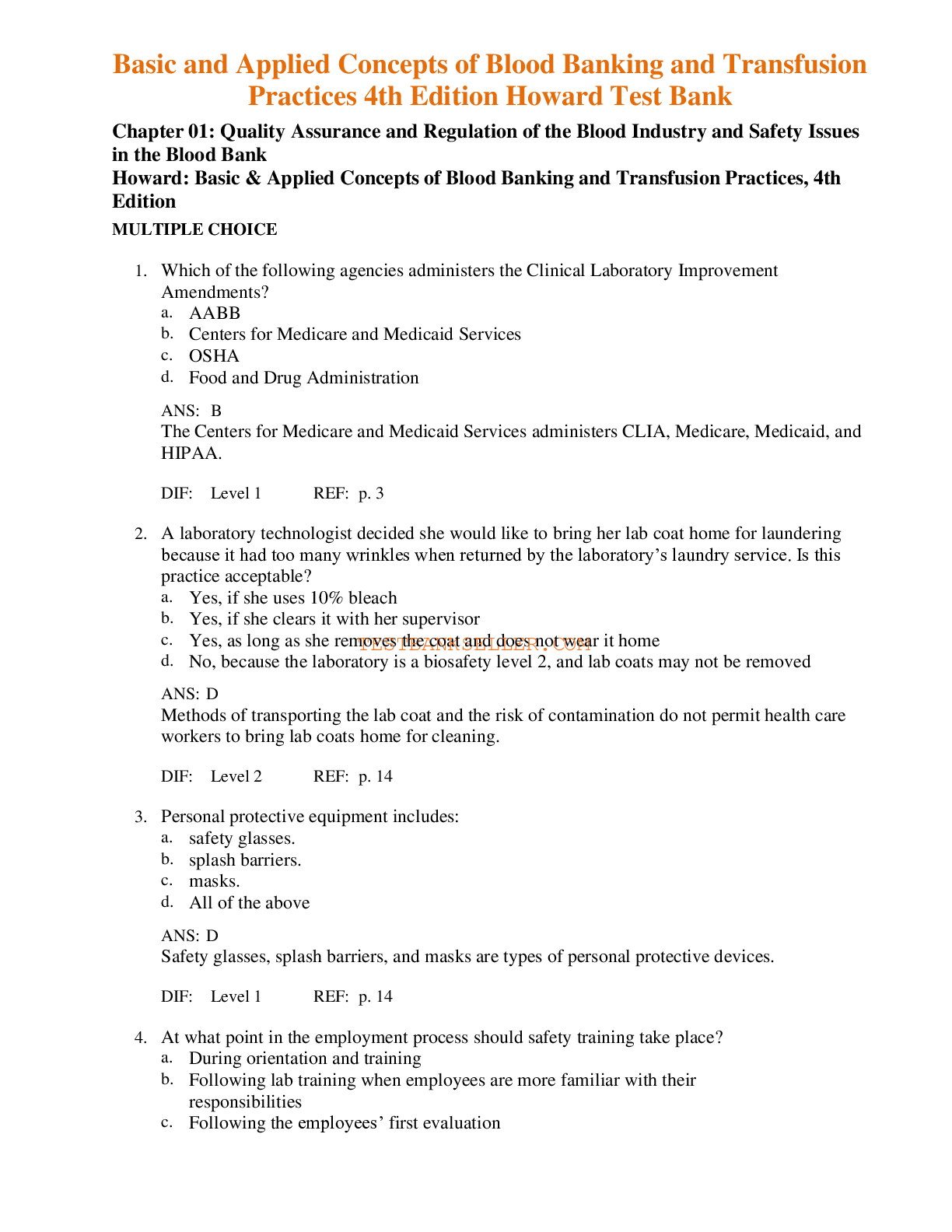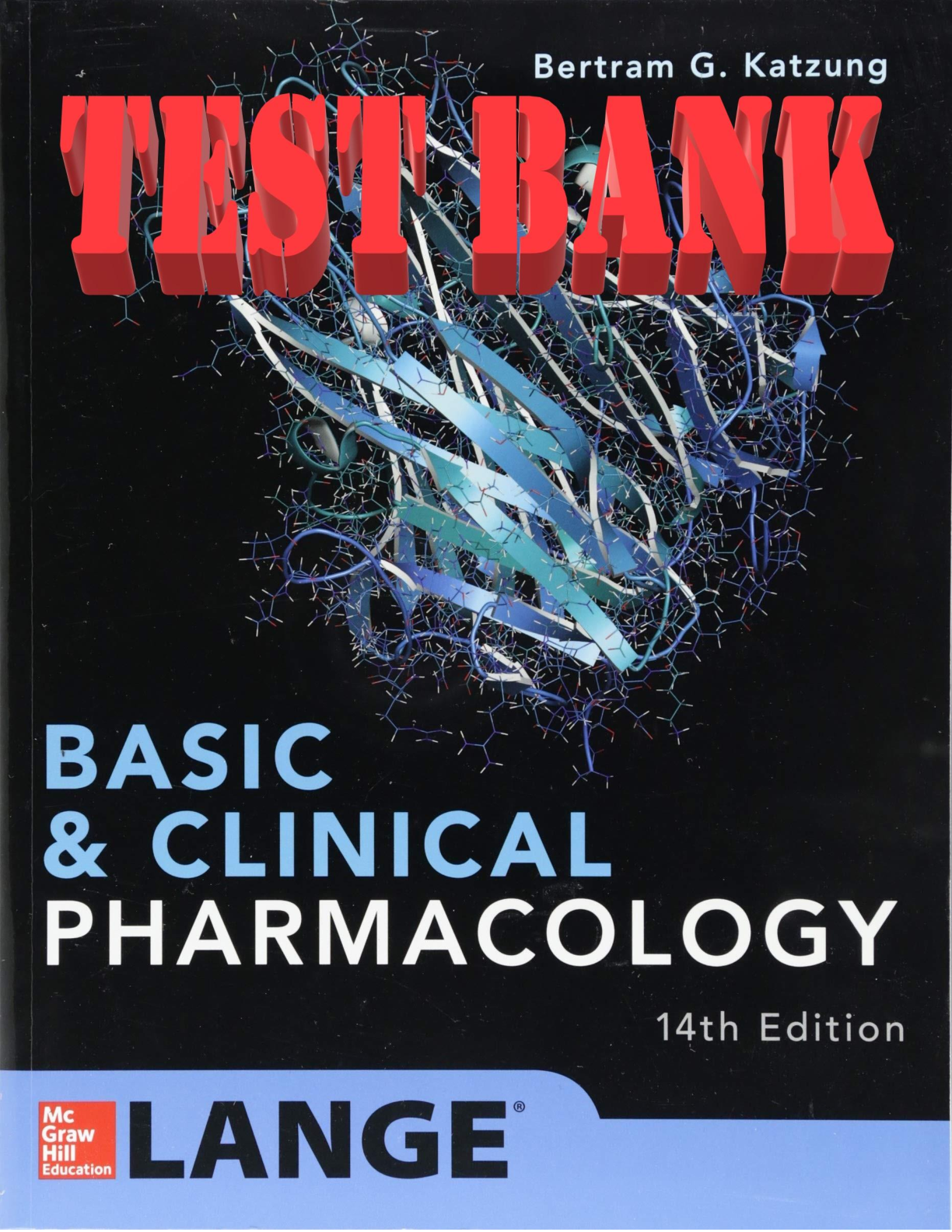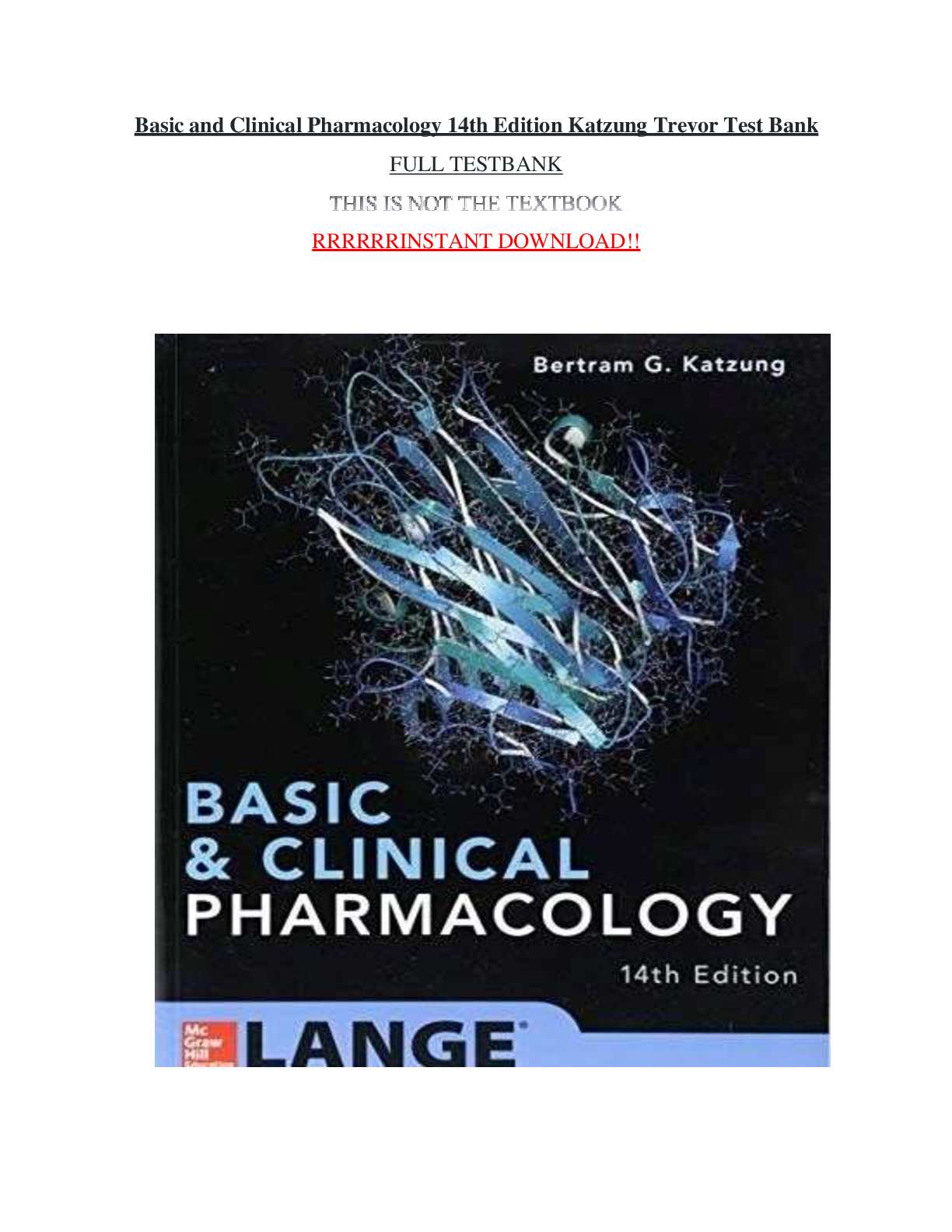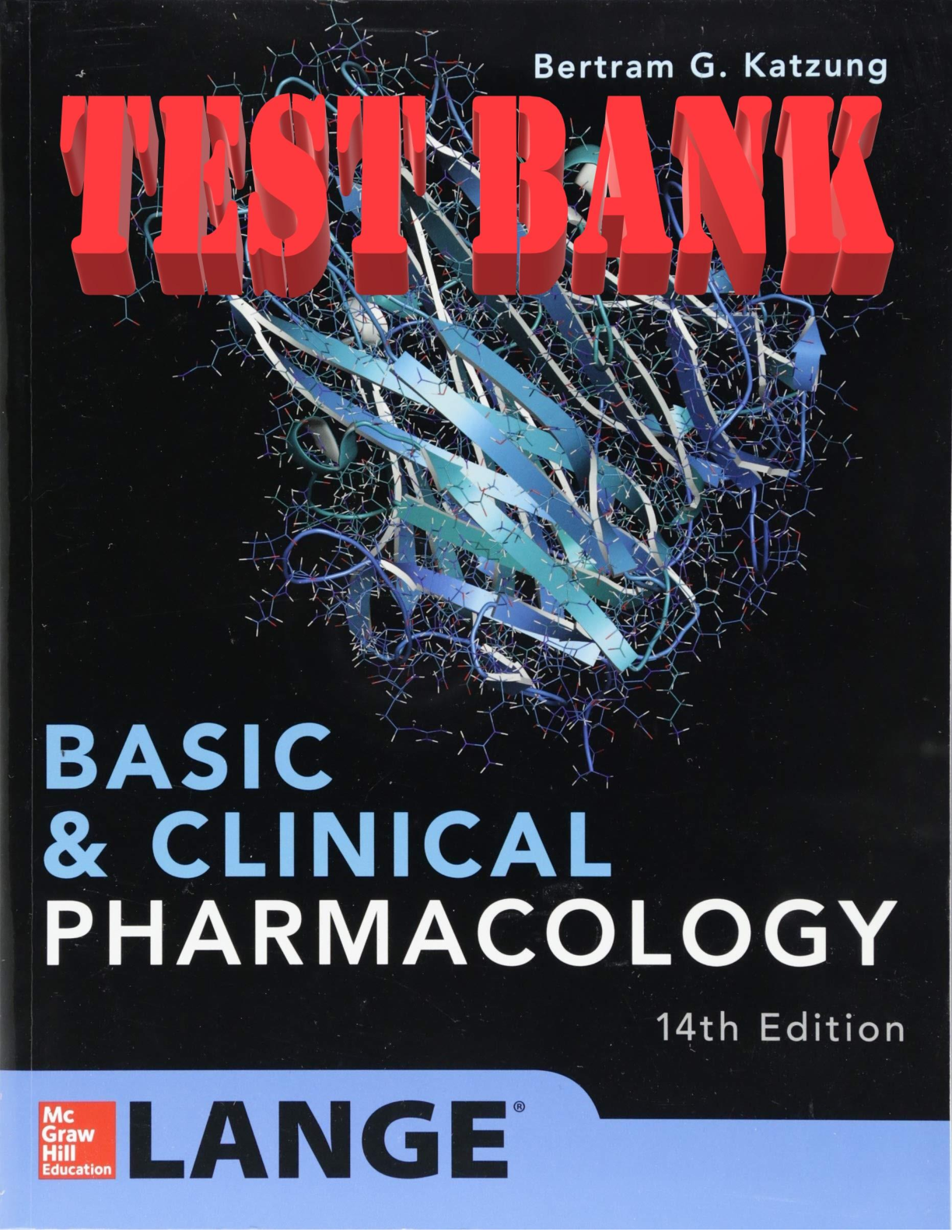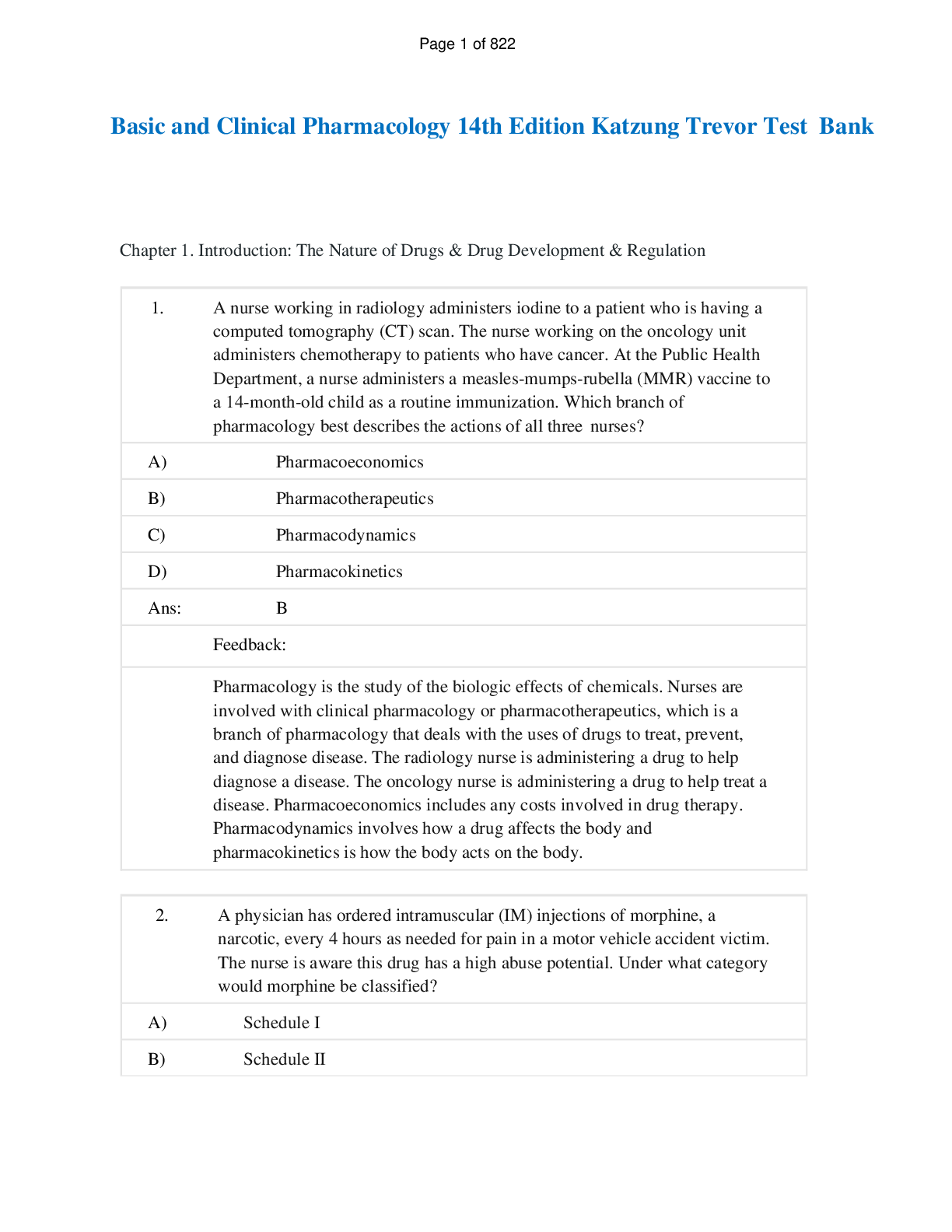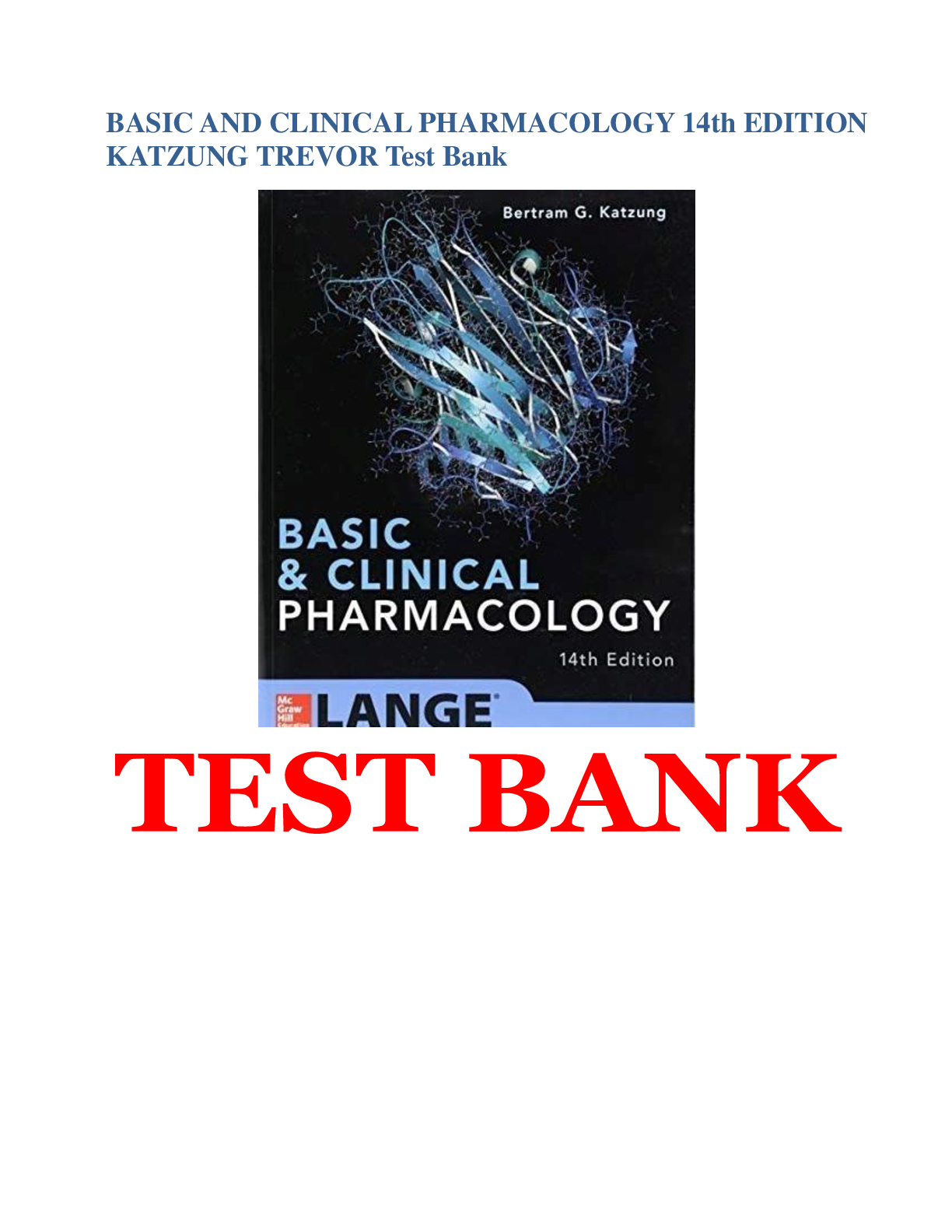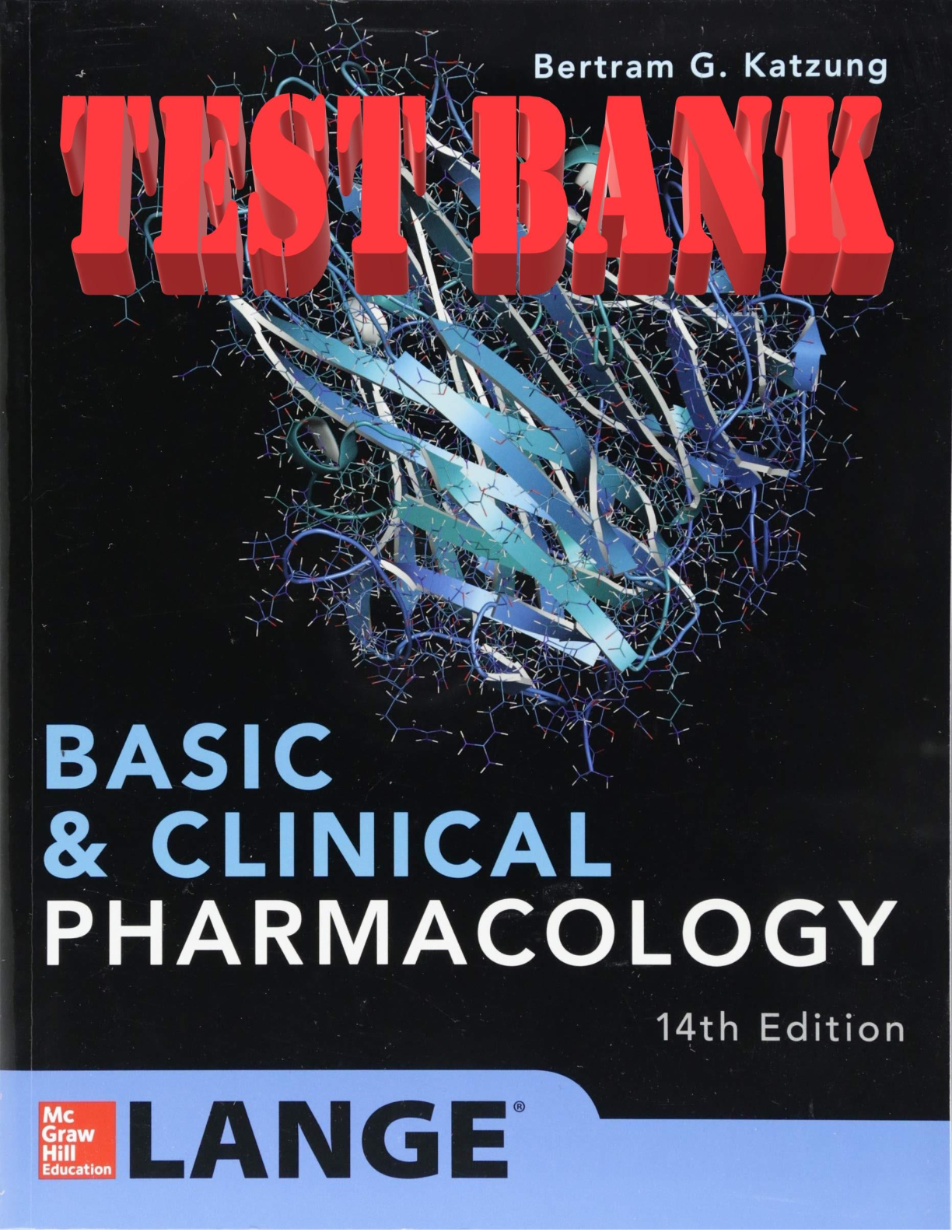Pharmacology > TEST BANK > Test Bank for Basic and Clinical Pharmacology 14th Edition Katzung Trevor! RATED A+ (All)
Test Bank for Basic and Clinical Pharmacology 14th Edition Katzung Trevor! RATED A+
Document Content and Description Below
Test Bank for Basic and Clinical Pharmacology 14th Edition Katzung Trevor Table of Contents Chapter 1. Introduction: The Nature of Drugs & Drug Development & Regulation .................................. ... 3 Chapter 2- Drug Receptors & Pharmacodynamics ............................................................................... 22 Chapter 3. Pharmacokinetics & Pharmacodynamics: Rational Dosing & the Time Course of Drug Action ............................................................................................................................................................. 22 Chapter 4. Drug Biotransformation ....................................................................................................... 22 Chapter 5. Pharmacogenomics ............................................................................................................ 22 Chapter 6. Introduction to Autonomic Pharmacology ............................................................................ 41 Chapter 7. Cholinoceptor-Activating & Cholinesterase-Inhibiting Drugs ................................................ 60 Chapter 8. Cholinoceptor-Blocking Drugs ............................................................................................. 76 Chapter 9. Adrenoceptor Agonists & Sympathomimetic Drugs1. ......................................................... 94 Chapter 10. Adrenoceptor Antagonist Drugs ...................................................................................... 110 Chapter 11. Antihypertensive Agents.................................................................................................. 128 Chapter 12. Vasodilators & the Treatment of Angina Pectoris ............................................................ 147 Chapter 13. Drugs Used in Heart Failure ............................................................................................ 164 Chapter 14. Agents Used in Cardiac Arrhythmias ............................................................................... 180 Chapter 15. Diuretic Agents ................................................................................................................ 198 Chapter 16- Histamine, Serotonin, & the Ergot Alkaloids .................................................................... 214 Chapter 17. Vasoactive Peptides ........................................................................................................ 214 Chapter 18. The Eicosanoids: Prostaglandins, Thromboxanes, Leukotrienes, & Related Compounds 223 Chapter 19-Nitric Oxide Drugs Used in Asthma .................................................................................. 229 Chapter 21. Introduction to the Pharmacology of CNS Drugs ............................................................. 229 Chapter 22-Sedative-Hypnotic Drugs ................................................................................................. 247 Chapter 23. The Alcohols ................................................................................................................... 247 Chapter 24. Antiseizure Drugs ............................................................................................................ 265 Chapter 25 -General Anesthetics........................................................................................................ 282 Chapter 26. Local Anesthetics ............................................................................................................ 282 Chapter 27. Skeletal Muscle Relaxants .............................................................................................. 300 Chapter 28. Pharmacologic Management of Parkinsonism & Other Movement Disorders .................. 317 Chapter 29. Antipsychotic Agents & Lithium ....................................................................................... 334 Chapter 30. Antidepressant Agents .................................................................................................... 352 Chapter 31- Opioid Agonists & Antagonists ........................................................................................ 371 Chapter 32. Drugs of Abuse ............................................................................................................... 371 Chapter 33. Agents Used in Cytopenias; Hematopoietic Growth Factors ............................................ 387 Chapter 34. Drugs Used in Disorders of Coagulation ......................................................................... 404 Chapter 35. Agents Used in Dyslipidemia ........................................................................................... 420 Chapter 36. Nonsteroidal Anti-Inflammatory Drugs, Disease-Modifying Antirheumatic Drugs, Nonopioid Analgesics, & Drugs Used in Gout ..................................................................................................... 438 1 | P a g eChapter 37. Hypothalamic & Pituitary Hormones ................................................................................ 455 Chapter 38. Thyroid & Antithyroid Drugs ............................................................................................ 472 Chapter 39. Adrenocorticosteroids & Adrenocortical Antagonists ....................................................... 489 Chapter 40. The Gonadal Hormones & Inhibitors ............................................................................... 507 Chapter 42. Agents That Affect Bone Mineral Homeostasis................................................................ 543 Chapter 43-Beta-Lactam & Other Cell Wall- & Membrane-Active Antibiotics ...................................... 561 Chapter 44. Tetracyclines, Macrolides, Clindamycin, Chloramphenicol, Streptogramins, & Oxazolidinones ................................................................................................................................... 561 Chapter 45. Aminoglycosides & Spectinomycin .................................................................................. 561 Chapter 46. Sulfonamides, Trimethoprim, & Quinolones ..................................................................... 561 Chapter 47. Antimycobacterial Drugs ................................................................................................. 561 Chapter 48. Antifungal Agents ............................................................................................................ 580 Chapter 49. Antiviral Agents ............................................................................................................... 598 Chapter 50- Miscellaneous Antimicrobial Agents; Disinfectants, Antiseptics, & Sterilants .................... 616 Chapter 51. Clinical Use of Antimicrobial Agents ................................................................................ 616 Chapter 52. Antiprotozoal Drugs......................................................................................................... 635 Chapter 53. Clinical Pharmacology of the Antihelminthic Drugs .......................................................... 652 Chapter 54. Cancer Chemotherapy .................................................................................................... 669 Chapter 55. Immunopharmacology..................................................................................................... 688 Chapter 56-Introduction to Toxicology: Occupational & Environmental .............................................. 707 Chapter 57. Heavy Metal Intoxication & Chelators.............................................................................. 707 Chapter 58. Management of the Poisoned Patient .............................................................................. 707 Chapter 59. Special Aspects of Perinatal & Pediatric Pharmacology .................................................. 738 Chapter 60. Special Aspects of Geriatric Pharmacology..................................................................... 744 Chapter 61. Dermatologic Pharmacology ........................................................................................... 749 Chapter 62. Drugs Used in the Treatment of Gastrointestinal Diseases .............................................. 755 Chapter 63. Therapeutic & Toxic Potential of Over-the-Counter Agents ............................................. 772 Chapter 64. Dietary Supplements & Herbal Medications .................................................................... 791 Chapter 65- Rational Prescribing & Prescription Writing ..................................................................... 793 Chapter 66. Important Drug Interactions & Their Mechanisms ........................................................... 793 2 | P a g eChapter 1. Introduction: The Nature of Drugs & Drug Development & Regulation 1. A nurse working in radiology administers iodine to a patient who is having a computed tomography (CT) scan. The nurse working on the oncology unit administers chemotherapy to patients who have cancer. At the Public Health Department, a nurse administers a measles-mumps-rubella (MMR) vaccine to a 14-month-old child as a routine immunization. Which branch of pharmacology best describes the actions of all three nurses? A) B) C) D) Ans: Pharmacoeconomics Pharmacotherapeutics Pharmacodynamics Pharmacokinetics B Feedback: Pharmacology is the study of the biologic effects of chemicals. Nurses are involved with clinical pharmacology or pharmacotherapeutics, which is a branch of pharmacology that deals with the uses of drugs to treat, prevent, and diagnose disease. The radiology nurse is administering a drug to help diagnose a disease. The oncology nurse is administering a drug to help treat a disease. Pharmacoeconomics includes any costs involved in drug therapy. Pharmacodynamics involves how a drug affects the body and pharmacokinetics is how the body acts on the body. 2. A physician has ordered intramuscular (IM) injections of morphine, a narcotic, every 4 hours as needed for pain in a motor vehicle accident victim. The nurse is aware this drug has a high abuse potential. Under what category would morphine be classified? A) B) C) D) Ans: Schedule I Schedule II Schedule III Schedule IV B Feedback: 3 | P a g eNarcotics with a high abuse potential are classified as Schedule II drugs because of severe dependence liability. Schedule I drugs have high abuse potential and no accepted medical use. Schedule III drugs have a lesser abuse potential than II and an accepted medical use. Schedule IV drugs have low abuse potential and limited dependence liability. 3. A) B) C) D) Ans: When involved in phase III drug evaluation studies, what responsibilities would the nurse have? Working with animals who are given experimental drugs Choosing appropriate patients to be involved in the drug study Monitoring and observing patients closely for adverse effects Conducting research to determine effectiveness of the drug C Feedback: Phase III studies involve use of a drug in a vast clinical population in which patients are asked to record any symptoms they experience while taking the drugs. Nurses may be responsible for helping collect and analyze the information to be shared with the Food and Drug Administration (FDA) but would not conduct research independently because nurses do not prescribe medications. Use of animals in drug testing is done in the preclinical trials. Select patients who are involved in phase II studies to participate in studies where the participants have the disease the drug is intended to treat. These patients are monitored closely for drug action and adverse effects. Phase I studies involve healthy human volunteers who are usually paid for their participation. Nurses may observe for adverse effects and toxicity. 4. A) B) C) D) Ans: 4 | P a g e What concept is considered when generic drugs are substituted for brand name drugs? Bioavailability Critical concentration Distribution Half-life AFeedback: Bioavailability is the portion of a dose of a drug that reaches the systemic circulation and is available to act on body cells. Binders used in a generic drug may not be the same as those used in the brand name drug. Therefore, the way the body breaks down and uses the drug may differ, which may eliminate a generic drug substitution. Critical concentration is the amount of a drug that is needed to cause a therapeutic effect and should not differ between generic and brand name medications. Distribution is the phase of pharmacokinetics, which involves the movement of a drug to the bodys tissues and is the same in generic and brand name drugs. A drugs half-life is the time it takes for the amount of drug to decrease to half the peak level, which should not change when substituting a generic medication. 5. A) B) C) D) Ans: A nurse is assessing the patients home medication use. After listening to the patient list current medications, the nurse asks what priority question? Do you take any generic medications? Are any of these medications orphan drugs? Are these medications safe to take during pregnancy? Do you take any over-the-counter medications? D Feedback: It is important for the nurse to specifically question use of over-the- counter medications because patients may not consider them important. The patient is unlikely to know the meaning of orphan drugs unless they too are health care providers. Safety during pregnancy, use of a generic medication, or classification of orphan drugs are things the patient would be unable to answer but could be found in reference books if the nurse wishes to research them. 6. A) B) After completing a course on pharmacology for nurses, what will the nurse know? Everything necessary for safe and effective medication administration Current pharmacologic therapy; the nurse will not require ongoing education for 5 years. 5 | P a g eC) D) Ans: General drug information; the nurse can consult a drug guide for specific drug information. The drug actions that are associated with each classification of medication C Feedback: After completing a pharmacology course nurses will have general drug information needed for safe and effective medication administration but will need to consult a drug guide for specific drug information before administering any medication. Pharmacology is constantly changing, with new drugs entering the market and new uses for existing drugs identified. Continuing education in pharmacology is essential to safe practice. Nurses tend to become familiar with the medications they administer most often, but there will always be a need to research new drugs and also those the nurse is not familiar with because no nurse knows all medications. 7. A nurse is instructing a pregnant patient concerning the potential risk to her fetus from a Pregnancy Category B drug. What would the nurse inform the patient? A) B) C) D) Ans: Adequate studies in pregnant women have demonstrated there is no risk to the fetus. Animal studies have not demonstrated a risk to the fetus, but there have been no adequate studies in pregnant women. Animal studies have shown an adverse effect on the fetus, but there are no adequate studies in pregnant women. There is evidence of human fetal risk, but the potential benefits from use of the drug may be acceptable despite potential risks. B Feedback: 6 | P a g eCategory B indicates that animal studies have not demonstrated a risk to the fetus. However, there have not been adequate studies in pregnant women to demonstrate risk to a fetus during the first trimester of pregnancy and no evidence of risk in later trimesters. Category A indicates that adequate studies in pregnant women have not demonstrated a risk to the fetus in the first trimester or in later trimesters. Category C indicates that animal studies have shown an adverse effect on the fetus, but no adequate studies in humans. Category D reveals evidence of human fetal risk, but the potential benefits from the use of the drugs in pregnant women may outweigh potential risks. 8. Discharge planning for patients leaving the hospital should include instructions on the use of over-the-counter (OTC) drugs. Which comment by the patient would demonstrate a good understanding of OTC drugs? A) B) C) D) Ans: OTC drugs are safe and do not cause adverse effects if taken properly. OTC drugs have been around for years and have not been tested by the Food and Drug Administration (FDA). OTC drugs are different from any drugs available by prescription and cost less. OTC drugs could cause serious harm if not taken according to directions. D Feedback: It is important to follow package directions because OTCs are medications that can cause serious harm if not taken properly. OTCs are drugs that have been determined to be safe when taken as directed; however, all drugs can produce adverse effects even when taken properly. They may have originally been prescription drugs that were tested by the FDA or they may have been grandfathered in when the FDA laws changed. OTC education should always be included as a part of the hospital discharge instructions. 9. A) B) C) 7 | P a g e What would be the best source of drug information for a nurse? Drug Facts and Comparisons A nurses drug guide A drug package insertD) Ans: The Physicians Drug Reference (PDR) B Feedback: A nurses drug guide provides nursing implications and patient teaching points that are most useful to nurses in addition to need-to-know drug information in a very user friendly organizational style.Lippincotts Nursing Drug Guide (LNDG) has drug monographs organized alphabetically and includes nursing implications and patient teaching points. Numerous other drug handbooks are also on the market and readily available for nurses to use. Although other drug reference books such as Drug Facts and Comparisons, PDR, and drug package inserts can all provide essential drug information, they will not contain nursing implications and teaching points and can be more difficult to use than nurses drug guides. 10 . A) B) C) D) Ans: The nurse is preparing to administer a medication from a multidose bottle. The label is torn and soiled but the name of the medication is still readable. What is the nurses priority action? Discard the entire bottle and contents and obtain a new bottle. Find the drug information and create a new label for the bottle. Ask another nurse to verify the contents of the bottle. Administer the medication if the name of the drug can be clearly read. A Feedback: When the drug label is soiled obscuring some information the safest action by the nurse is to discard the bottle and contents because drug labels contain a great deal of important information, far more than just the name of the drug. Concentration of the drug, expiration date, administration directions, and precautions may be missing from the label and so put the patient at risk. Looking up drug information in a drug handbook or consulting with another nurse will not supply the expiration date or concentration of medication. Be safe and discard the bottle and its contents. 11 . A) 8 | P a g e What aspect of pharmacology does a nurse study? (Select all that apply.) Chemical pharmacologyB) C) D) E) Ans: Molecular pharmacology Impact of drugs on the body The bodys response to a drug Adverse and anticipated drug effects C, D, E Feedback: Nurses study pharmacology from a pharmacotherapeutic level, which includes the effect of drugs on the body, the bodys response to drugs, and both expected and unexpected drug effects. Chemical and molecular pharmacology (Options A and B) are not included in nursing pharmacology courses. 12 older . A) B) C) D) Ans: The nurse, providing patient teaching about home medication use to an adult, explains that even when drugs are taken properly they can produce negative or unexpected effects. What are these negative or unexpected effects called? Teratogenic effects Toxic effects Adverse effects Therapeutic effects C Feedback: Negative or unexpected effects are known as adverse or side effects. Teratogenic effects are adverse effects on the fetus and not a likely concern for an older adult. Toxic effects occur when medication is taken in larger than recommended dosages caused by an increase in serum drug levels. Therapeutic effects are the desired actions for which the medication is prescribed. 13 . A) B) 9 | P a g e After administering a medication, for what would the nurse assess the patient? Drug effects AllergiesC) D) Ans: Pregnancy Preexisting conditions A Feedback: After the medication is administered, the nurse assesses the patient for drug affects, both therapeutic and adverse. The nurse would assess the patient for allergies, preexisting conditions, and pregnancy before administering a medication. 14 . A) B) C) D) Ans: The nurse receives an order to administer an unfamiliar medication and obtains a nurses drug guide published four years earlier. What is the nurses most prudent action? Find a more recent reference source. Use the guide if the drug is listed. Ask another nurse for drug information. Verify the information in the guide with the pharmacist. A Feedback: The nurse is responsible for all medications administered and must find a recent reference source to ensure the information learned about the medication is correct and current. Using an older drug guide could be dangerous because it would not contain the most up-to-date information. Asking another nurse or the pharmacist does not guarantee accurate information will be obtained and could harm the patient if the information is wrong. 15 . A) B) C) D) 10 | P a g e What would the nurse provide when preparing a patient for discharge and home medication self-administration? Personal contact information to use if the patient has questions Thorough medication teaching about drugs and the drug regimen Over-the-counter medications to use to treat potential adverse effects A sample size package of medication to take home until prescription is filledAns: B Feedback: The nurse is responsible for providing thorough medication teaching about drugs and the drug regimen to ensure the patient knows how to take the medication and when to notify the provider. The nurse never provides personal contact information to a patient. If adverse effects arise, the patient is taught to call the health care provider and should not self-medicate with over-the-counter drugs, which could mask serious symptoms. The nurse never dispenses medication because it must be properly labeled for home use; this is done by the pharmacy. 16 . A) B) C) D) Ans: In response to the patients question about how to know whether drugs are safe, the nurse explains that all medications undergo rigorous scientific testing controlled by what organization? Food and Drug Administration (FDA) Drug Enforcement Agency (DEA) Centers for Disease Control and Prevention (CDC) Joint Commission on Accreditation of Healthcare Organizations (JCAHO) A Feedback: The FDA is responsible for controlling and regulating the development and sale of drugs in the United States, allowing new drugs to enter the market only after being subjected to rigorous scientific testing. The DEA regulates and controls the use of controlled substances. The CDC monitors and responds to infectious diseases. The JCAHO is an accrediting body that inspects acute care facilities to ensure minimum standards are met. 17 . A) B) C) 11 | P a g e The nurse, assisting with Phase I drug studies, is talking with a woman who asks, Why cant I participate in this study? What would be the nurses best response? Drugs pose a greater risk to women of reproductive age. Drugs are only tested on men because they are stronger. Women are more prone to adverse effects from medications.D) Ans: Drugs affect women differently than they affect women. A Feedback: Phase I drug trials usually involve healthy male volunteers because chemicals may exert an unknown and harmful effect on ova in women which could result in fetal damage when the woman becomes pregnant. Drugs are tested on both men and women, but women must be fully informed of risks and sign a consent stating they understand the potential for birth defects. Women are not more prone to adverse effects of medications. Although some drugs may affect women differently than men, this is a rationale for why drugs need to be tested on women, not an explanation of why women are not included in a phase I study. 18 disease . A) B) C) D) Ans: The patient tells the nurse about a new drug being tested to treat the she was diagnosed with and asks the nurse whether the doctor can prescribe a medication still in the preclinical phase of testing. What is the nurses best response? The doctor would have to complete a great deal of paperwork to get approval to prescribe that drug. Sometimes pharmaceutical companies are looking for volunteers to test a new drug and the doctor could give them your name. Drugs in the preclinical phase of testing are only tested on animals and so would not be available to you. Drugs in the preclinical phase of testing are given only to healthy young men and so would not be available to you. C Feedback: During the preclinical phase of testing drugs are tested on animals and are not available to patients. In phase I, the drug is tested on volunteers who are usually healthy young men. It is only in phase III studies that the drug is made available to prescribers who agree to closely monitor patients getting the medication. 12 | P a g e19 . The nurse is caring for a patient who had a severe, acute, previously unseen adverse effect of a drug in Phase III testing. The patient asks, After all the testing done on this drug, didnt they know this adverse effect could occur? What is the nurses best response? (Select all that apply.) A) B) C) D) E) Ans: Pharmaceutical companies sometimes underreport problems to make more money. Your response to this medication will be reported to the drug company and the Food and Drug Administration (FDA). When a drug begins to be used by a large clinical market, new adverse effects may be found. The pharmaceutical company weighs the benefits of the drug with the severity of adverse effects. After a drug reaches phase III testing it is considered an accepted drug and will not be recalled. B, C Feedback: When a new and unexpected adverse effect occurs, especially one of a serious nature, it is reported to the drug company who reports it to the FDA immediately. When a large number of people begin using the drug in phase III studies, it is not unusual to identify adverse effects not previously noted. It would be both unprofessional and inaccurate to imply that pharmaceutical companies put profit ahead of patient concern because lawsuits would remove any potential profit if a drug proves harmful. The FDA is responsible for weighing risk versus benefit in deciding whether to allow the drug to move to the next phase of testing. Drugs found to have serious adverse effects can be removed from the market at any time. 20 . The telephone triage nurse receives a call from a patient asking for a prescription for a narcotic to manage his surgical pain. The nurse explains that narcotic prescriptions must be written and cannot be called in to the pharmacy. The patient says, Why are narcotics so difficult to get a prescription for? What is the nurses best response? A) B) 13 | P a g e The Drug Enforcement Agency (DEA) determines the risk for addiction and the Food and Drug Administration (FDA) enforces their control. The increase in the number of drug addicts has made the rules stronger.C) D) Ans: The Centers for Disease Control and Prevention (CDC) regulates use of controlled substances to reduce the risk of injury. Controlled substances like narcotics are controlled by the FDA and the DEA. D Feedback: Controlled substances are controlled by the FDA and the DEA: the DEA enforces control while the FDA determines abuse potential. Regulations related to controlled substances have remained strict and specific and have not been significantly impacted by substance abusers. The CDC is not involved in control of narcotics and other controlled substances. 21 . A) B) C) D) Ans: The nurse explains the Drug Enforcement Agencys (DEAs) schedule of controlled substances to the nursing assistant who asks, Do you ever get a prescription for Schedule I medications? What is the nurses best response? Schedule I medications have no medical use so they are not prescribed. Schedule I medications have the lowest risk for abuse and do not require a prescription. Schedule I medications are only prescribed in monitored units for patient safety. Schedule I medications are found in antitussives and antidiarrheals sold over the counter. A Feedback: Schedule I medications have no medical use and are never prescribed. Schedule V medications have the lowest risk for abuse and are found mostly in antitussives and antidiarrheals but they are not sold over the counter. 22 . A) 14 | P a g e The nurse, working on the maternity unit, receives a call from a pregnant woman asking how she can know whether a medication is safe to take while pregnant. What is the nurses best response? You can take any drug indicated as a Category A.B) C) D) Ans: No medications should be taken during pregnancy. Never take medication until you receive approval from your health care provider. Most medications are safe but you need to weigh benefit against risk. C Feedback: The best response to a pregnant woman asking about medication usage is to talk with her obstetric practitioner because the best advice will come from someone who knows their health and pregnancy history. While Category A drugs have no known risk, they may be contraindicated by the womans health condition or pregnancy issues and many pregnant women would not know what it means to be a Category A drug. Medications can be helpful during pregnancy if taken safely and appropriately. Although risk benefit needs to be weighed, it should occur with advice from the obstetric practitioner. 23 . A) B) C) D) Ans: A patient asks the nurse, What is a Drug Enforcement Agency (DEA) number? What is the nurses best response? DEA Numbers are given to physicians and pharmacists when they register with the DEA to prescribe and dispense controlled substances. Physicians must have a DEA number in order to prescribe any type of medication for patients. DEA numbers are case numbers given when someone breaks the law involving a controlled substance. DEA numbers are contact numbers to talk with someone at the DEA when questions arise about controlled substances. A Feedback: All pharmacists and physicians must register with the DEA. They are given numbers that are required before they can dispense or prescribe controlled substances. DEA numbers are only needed when prescribing controlled substances. A DEA number is neither a case number nor a phone number. 15 | P a g e24 . A) B) C) D) Ans: When moving to another state, what is the nurse responsible for becoming familiar with? Local policies and procedures for controlled substance administration Local providers Drug Enforcement Agency (DEA) number for prescribing controlled substances The agency monitoring controlled substances in the new state Board of Nursing regulations of controlled substances in the new state A Feedback: The nurse needs to learn local policies and procedures for controlled substance administration because they can vary with some local governments more rigorous than others. Nurses do not memorize a providers DEA numbers. The DEA is a federal agency that monitors controlled substances in all states. State boards of nursing do not regulate controlled substances but may regulate how controlled substances are administered by nurses. 25 . A) B) C) D) Ans: The patient looks at the prescription provided by the doctor and asks the nurse whether he can request a generic substitution. The nurse answers No when noting what on the prescription? No refills DAW Brand name used on prescription Patient older than 65 years of age B Feedback: DAW stands for dispense as written and means that the doctor does not want a generic substituted for the prescribed medication. Requesting no refills does not preclude the substitution of a generic medication. Even when the brand name is ordered, the pharmacist can substitute a generic equivalent so long as the prescriber does not write DAW. Generic substitutions are not impacted by the patients age. 16 | P a g e26 . A) B) C) D) Ans: The patient asks the nurse why generic drugs would be used and voices concerns that only the brand name product will be safe. What is the nurses best response? Generic drugs are often less expensive. Some quality control problems have been found with generic drugs. Most generic drugs are very safe and can be cost effective as well. Although initial cost is higher for a brand name it may cost less in the long run. C Feedback: Most generic medications are completely safe and may be identical to the brand name drug except generic medications are often less expensive, but this does not address the patients concern about safety. Although some quality control issues have occurred in the past, this does not address the patients concerns regarding safety or explain why generic drugs are prescribed and used. Although some doctors believe initial cost is higher but will cost less over time, this response also does not address the patients concerns. 27 . A) B) C) D) Ans: While studying for the test, the nursing student encounters the following drug: papaverine (Pavabid). What does the nursing student identify the name Pavabid as? The generic name The chemical name The brand name The chemical and generic name C Feedback: Several clues indicate the brand name including capitalization of the first letter in the name and in parentheses. Generic names are not capitalized; chemical names are descriptions of the chemistry of the medication resulting in complicated names. 17 | P a g e28 . The patient is prescribed a medication that was just placed in Phase IV study. The patient tells the nurse, This medication is too expensive. Could the doctor order a generic form of this medication? What is the nurses most accurate response? A) B) C) D) Ans: Medications are not produced in generic form until the patent expires, which normally takes several years. You can request the generic form but the binder used may make the drug less effective for this medication. The generic form of the medication would not be any less expensive because this is a relatively new medication. Generic medications are lower quality drugs and that would mean you would not be getting the best treatment available. A Feedback: When a new drug enters the market, it is given a time-limited patent; generic forms of the medication cannot be produced until the patent expires. Because no generic version of this drug will exist because it is so new, it is impossible to predict what binder will be used or what the cost would be. 29 . A) B) C) D) E) Ans: The nurse learns that a drug needed by the patient is classified as an orphan drug and recognizes what as a reason for this classification? (Select all that apply.) The drug is rarely prescribed. The drug has dangerous adverse effects. The drug treats a rare disease. The patent on the medication is still effective. Production by a company that only manufactures drugs. A, B, C Feedback: 18 | P a g eDrugs are classified as orphan drugs when they are not financially viable for a drug company to produce either because of risk for lawsuits about adverse effects or because the drug is not prescribed, which is often seen in rare diagnoses. Generic drugs are not produced until the patent expires, but this has no impact on classifying a particular drug as an orphan drug. Generic drugs are often produced by companies that only manufacture drugs without conducting research, but this has no bearing on the classification of orphan drugs. 30 . While collecting a medication history, the patient admits to doubling the recommended dosage of an over-the-counter (OTC) medication, saying Its harmless or they would require a prescription. What is the nurses best response? A) B) C) D) Ans: OTC drugs are serious medications and carry serious risks if not taken as directed. Taking medications like that is careless and you could kill yourself doing it. Sometimes you need to take more than the package directs to treat the symptoms. Did you notify your doctor of the increased dosage you were taking? A Feedback: OTC drugs are no less a medication than prescription drugs and carry the same types of risks for overdosage and toxicity if directions are not followed. Although increasing the dosage is careless and dangerous, it is important to use the information as a teaching opportunity rather than scolding the patient. Agreeing with the patient or asking her if she talked to the doctor misses the teaching opportunity, which could be harmful for the patient. 31 . A) B) C) 19 | P a g e The patient asks the nurse, Is it safe to take over-the-counter (OTC) medications with prescription medications? What is the nurses best response? (Select all that apply.) OTC medications can interact with prescription medications. It is important to tell your doctor all medications you take, including OTC. OTC medications could mask or hide signs and symptoms of a disease.D) E) Ans: You should avoid taking any OTC medication when taking prescription drugs. Taking OTC medications can make your prescription medication more effective. A, B, C Feedback: OTC medications can interact with prescription medications or other OTC so it is always important to consult your pharmacist and provider for advice. To provide the most accurate instruction, the health care provider must know all medications taken including dietary supplements, OTC, and prescription. OTC medications could mask or hide symptoms of a disease so it is always important to consult a physician if symptoms persist. OTC medications are not prohibited when taking prescription drugs as long as no drug interaction occurs. How an OTC will impact a prescription medication varies depending on the medications involved, so it is incorrect to say it will make the prescription drug more effective. 32 . A) B) C) D) E) Ans: Before administering a prescription medication, what information does the nurse find on the drug label? (Select all that apply.) Brand name Generic name Drug concentration Expiration date Adverse effects A, B, C, D Feedback: Prescription drug labels will contain the brand name, generic name, drug concentration, and expiration date. Adverse effects will not be listed on drug labels. 33 . The nurse is preparing a medication that is new to the market and cannot be found in the nurses drug guide. Where can the nurse get the most reliable information about this medication? 20 | P a g eA) B) C) D) Ans: Package insert Another nurse Drug manufacturer Physician A Feedback: The most reliable information about the drug can be found on the package insert supplied by the manufacturer because it was prepared according to strict Food and Drug Administration (FDA) regulations. Asking another nurse or the physician is not reliable and cannot be verified as accurate. It would not be realistic to call the drug manufacturer for information. 34 . A) B) C) D) Ans: The nurse explains that what drug resource book is compiled from package inserts? Nurses Drug Guide Physiciass Desk Reference (PDR) Drug Facts and Comparisons AMA Drug Evaluations B Feedback: The PDR is a compilation of information found on package inserts. The Nurses Drug Guide uses more easily understood language and incorporates nursing considerations and patient teaching points. Drug Facts and Comparisons includes cost comparison, often not found in other drug resource guides. The AMA Drug Evaluations is far less biased than the PDR and includes drugs still in the research stage of development. 21 | P a g eChapter 2- Drug Receptors & Pharmacodynamics Chapter 3. Pharmacokinetics & Pharmacodynamics: Rational Dosing & the Time Course of Drug Action Chapter 4. Drug Biotransformation Chapter 5. Pharmacogenomics 1. Drugs do not metabolize the same way in all people. For what patient would a nurse expect to assess for an alteration in drug metabolism? A) B) C) D) Ans: A 35-year-old woman with cervical cancer A 41-year-old man with kidney stones A 50-year-old man with cirrhosis of the liver A 62-year-old woman in acute renal failure C Feedback: The liver is the most important site of drug metabolism. If the liver is not functioning effectively, as in patients with cirrhosis, drugs will not metabolize normally so that toxic levels could develop unless dosage is reduced. A patient with cervical cancer or kidney stones would not be expected to have altered ability to metabolize drugs so long as no liver damage existed. The patient with renal failure would have altered excretion of the drugs through the renal system but metabolism would not be impacted. 2. A patient presents to the emergency department with a drug level of 50 units/ mL. The half-life of this drug is 1 hour. With this drug, concentrations above 25 units/mL are considered toxic and no more drug is given. How long will it take for the blood level to reach the non-toxic range? A) B) C) D) Ans: 22 | P a g e 30 minutes 1 hour 2 hours 3 hours B [Show More]
Last updated: 4 months ago
Preview 1 out of 823 pages
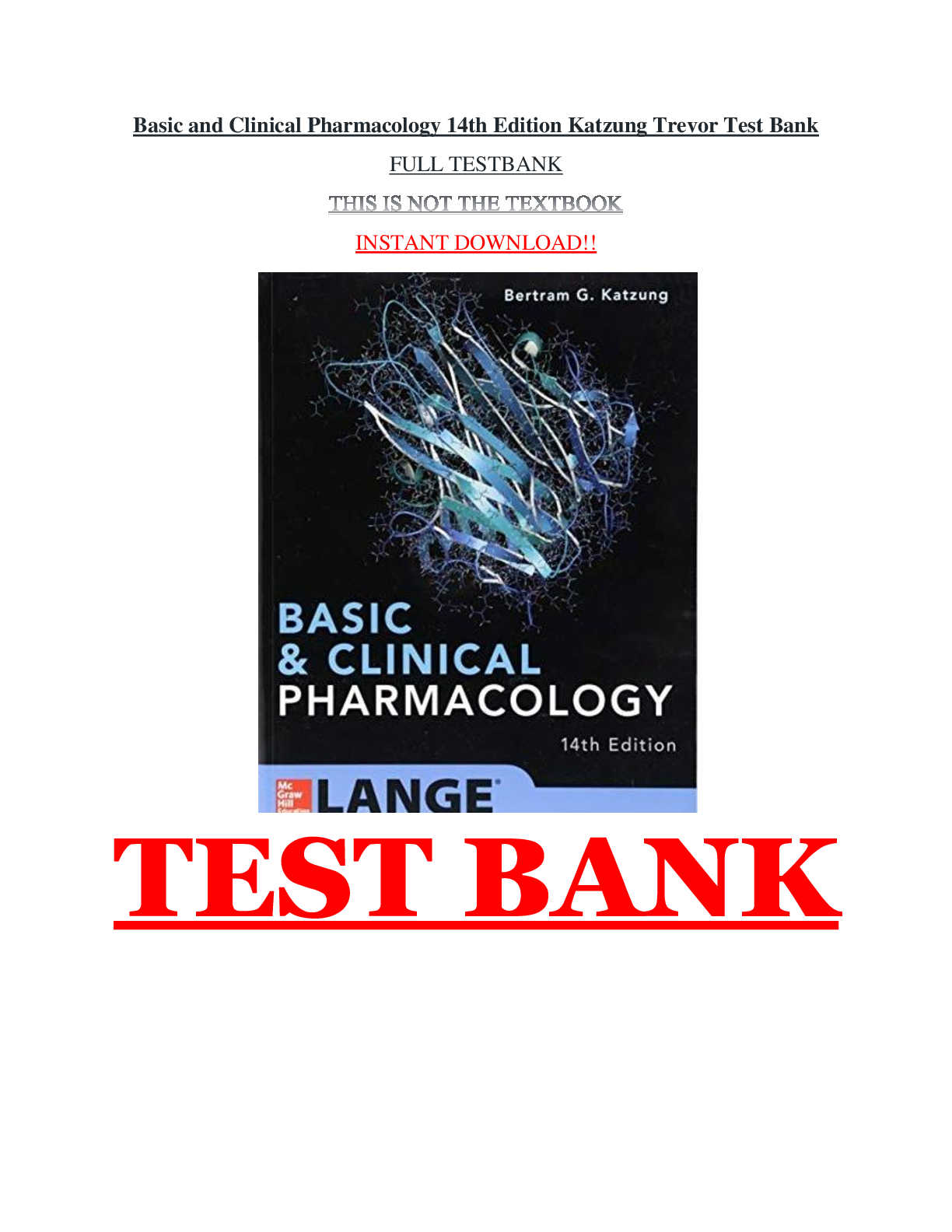
Reviews( 0 )
Document information
Connected school, study & course
About the document
Uploaded On
Sep 13, 2023
Number of pages
823
Written in
Additional information
This document has been written for:
Uploaded
Sep 13, 2023
Downloads
0
Views
169



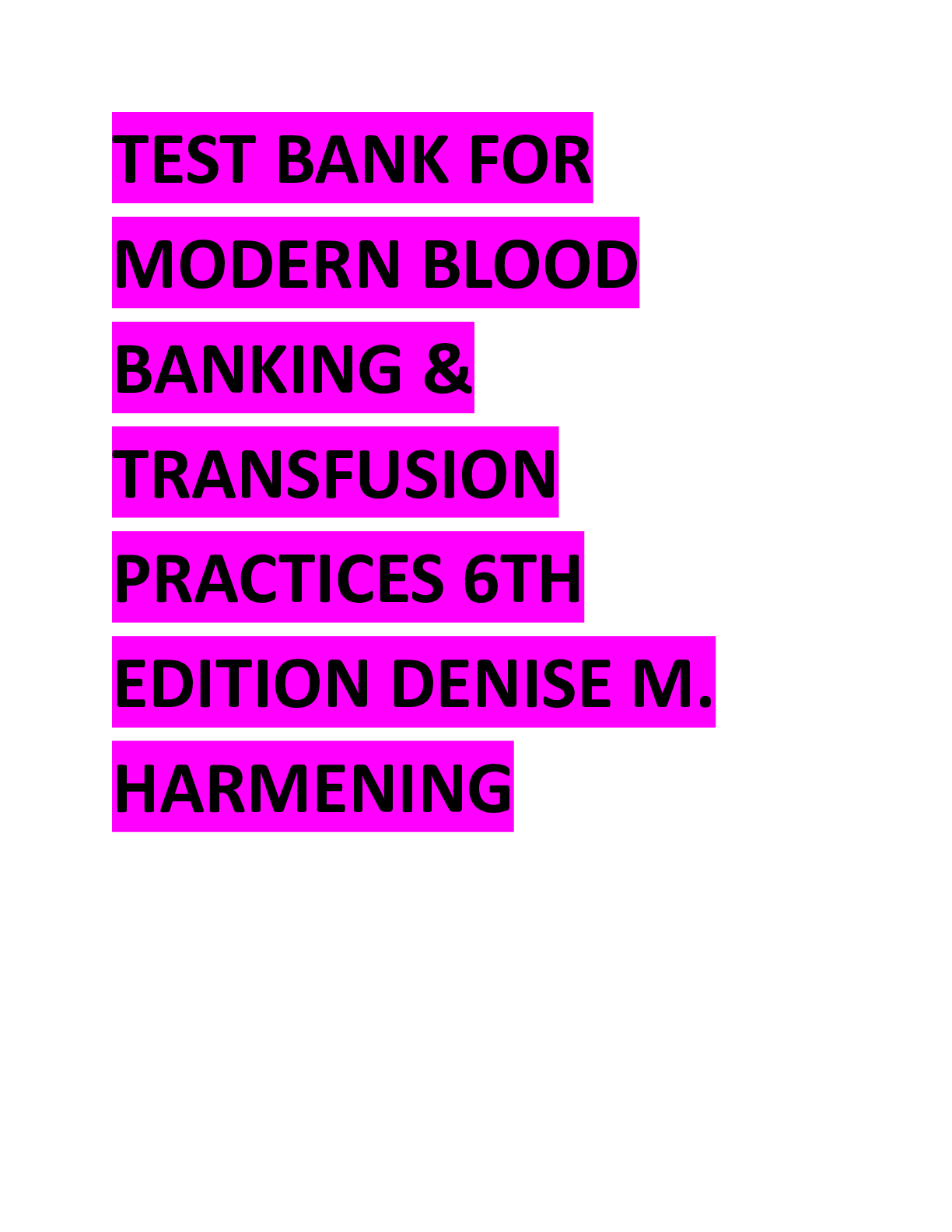
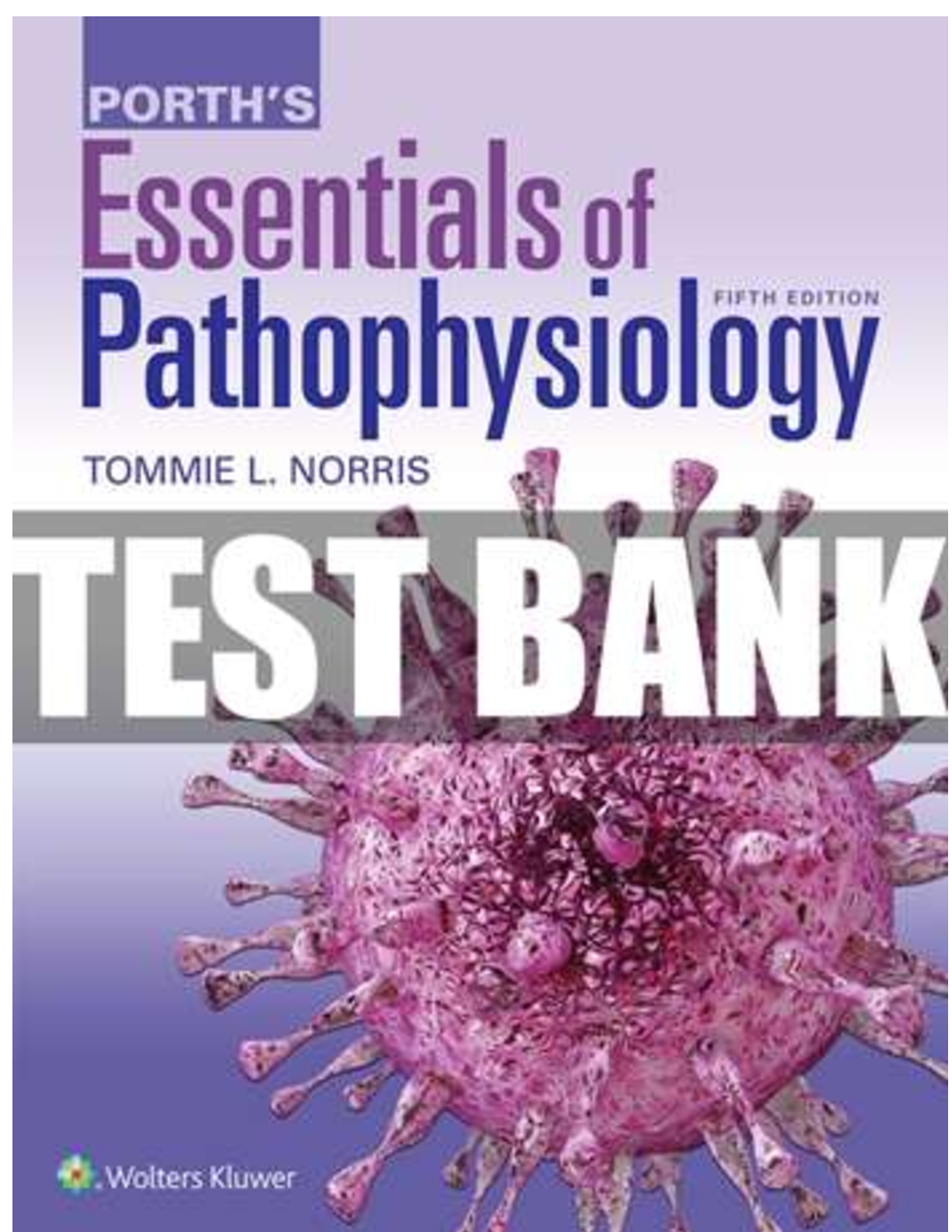
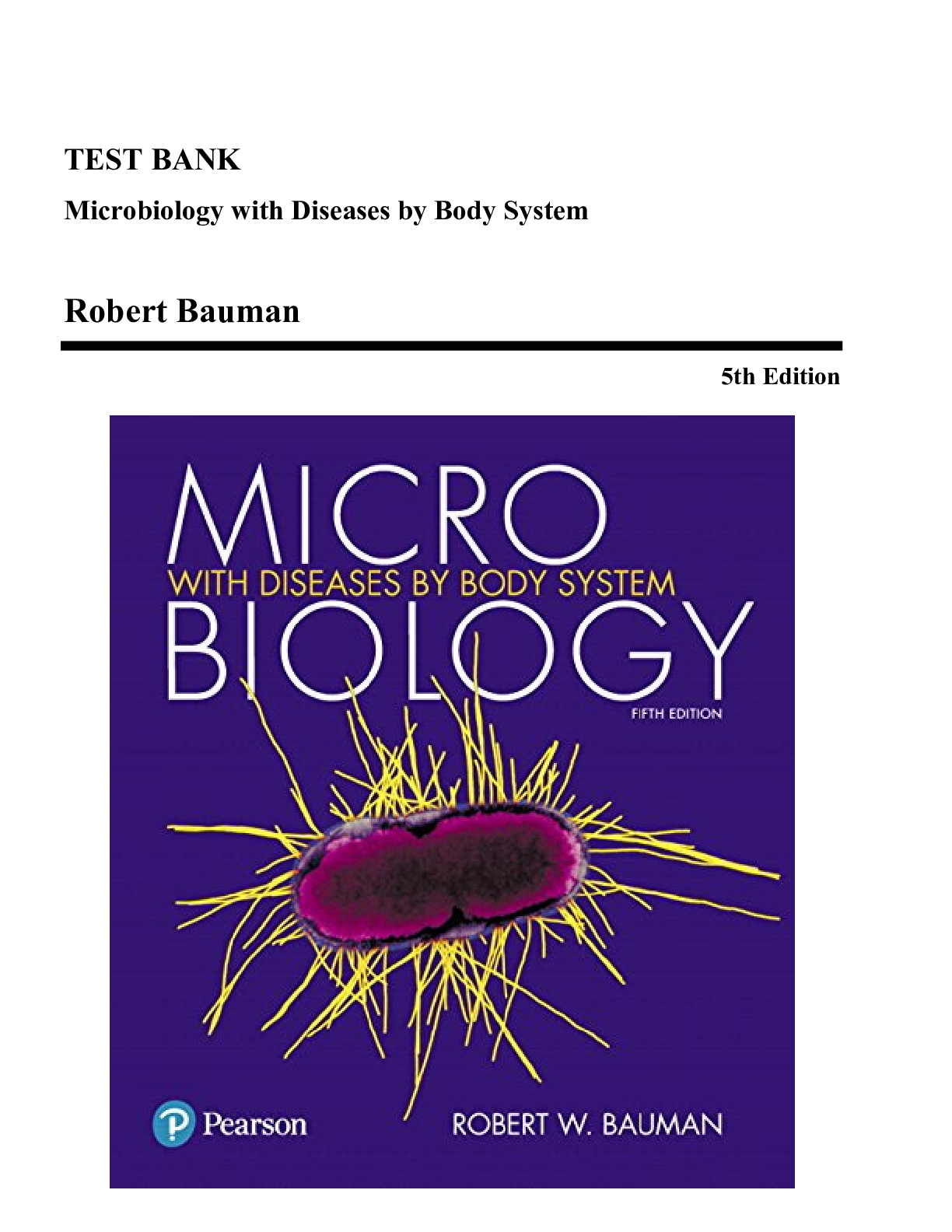

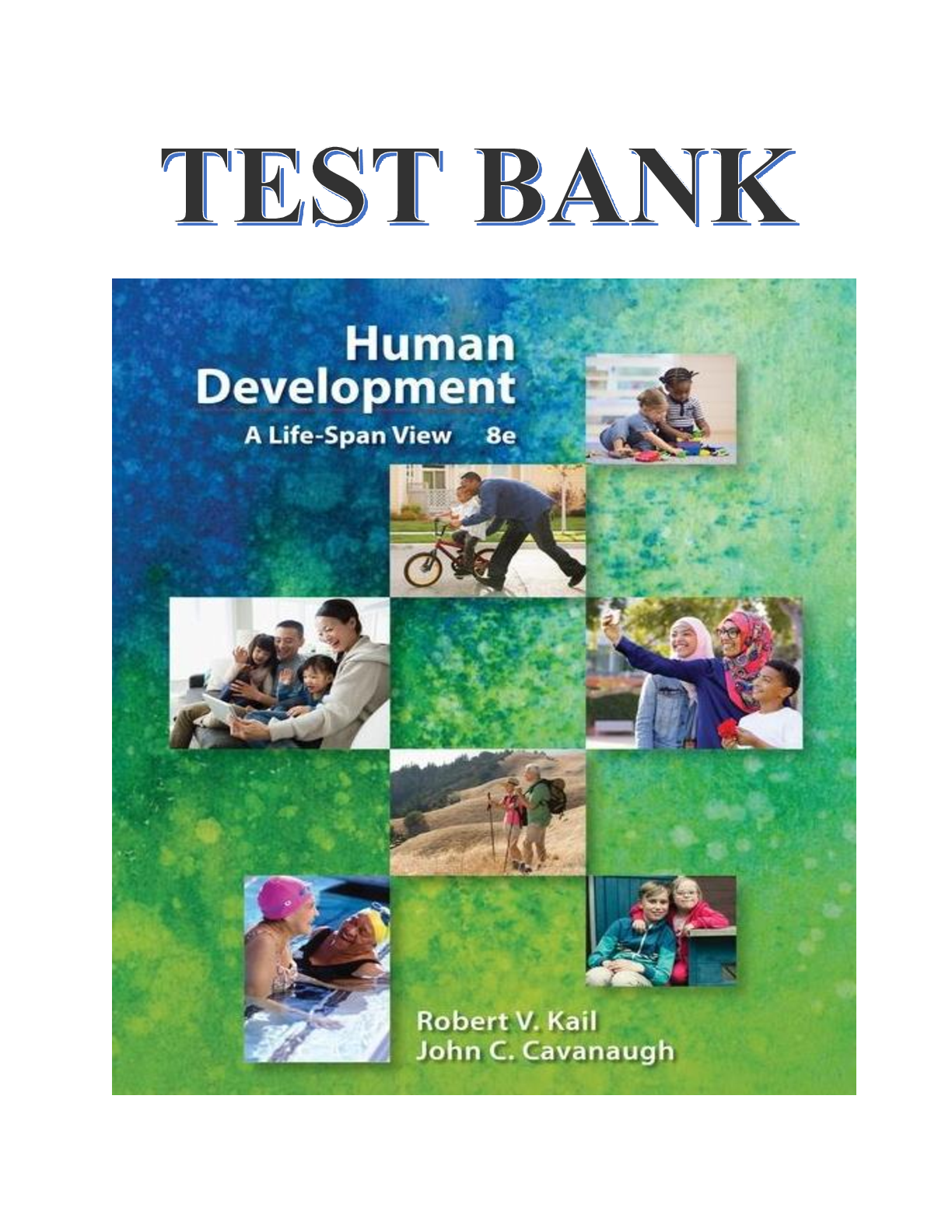
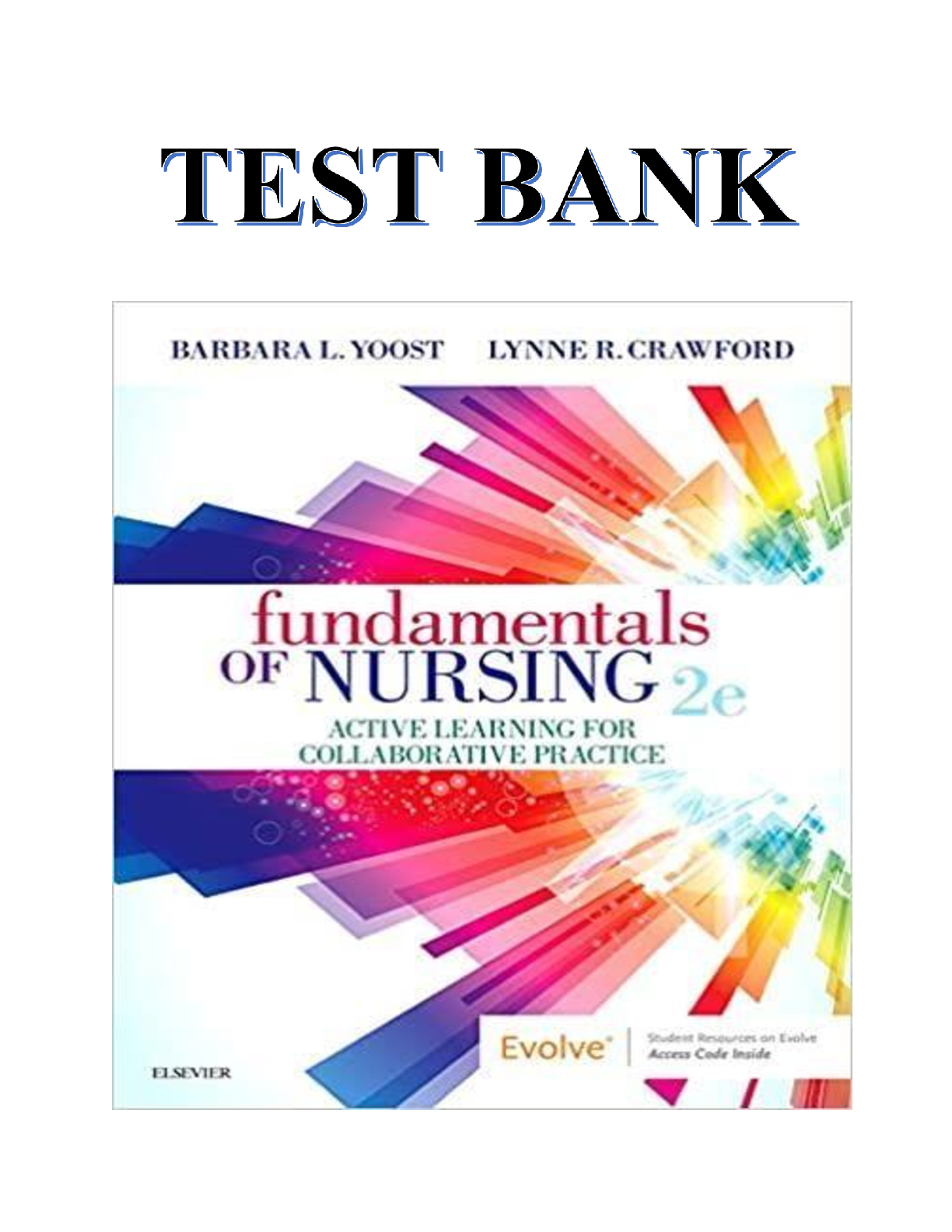
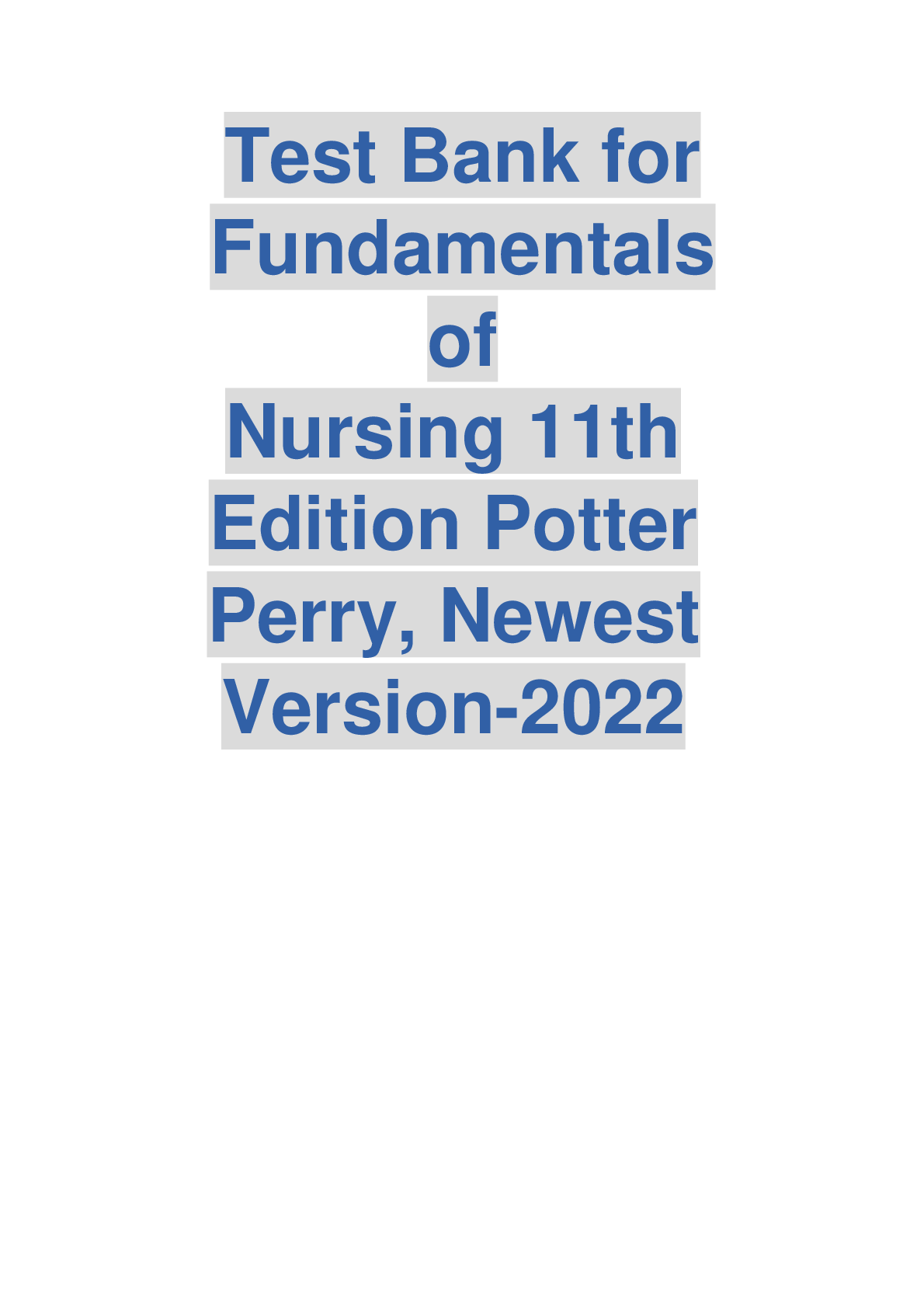
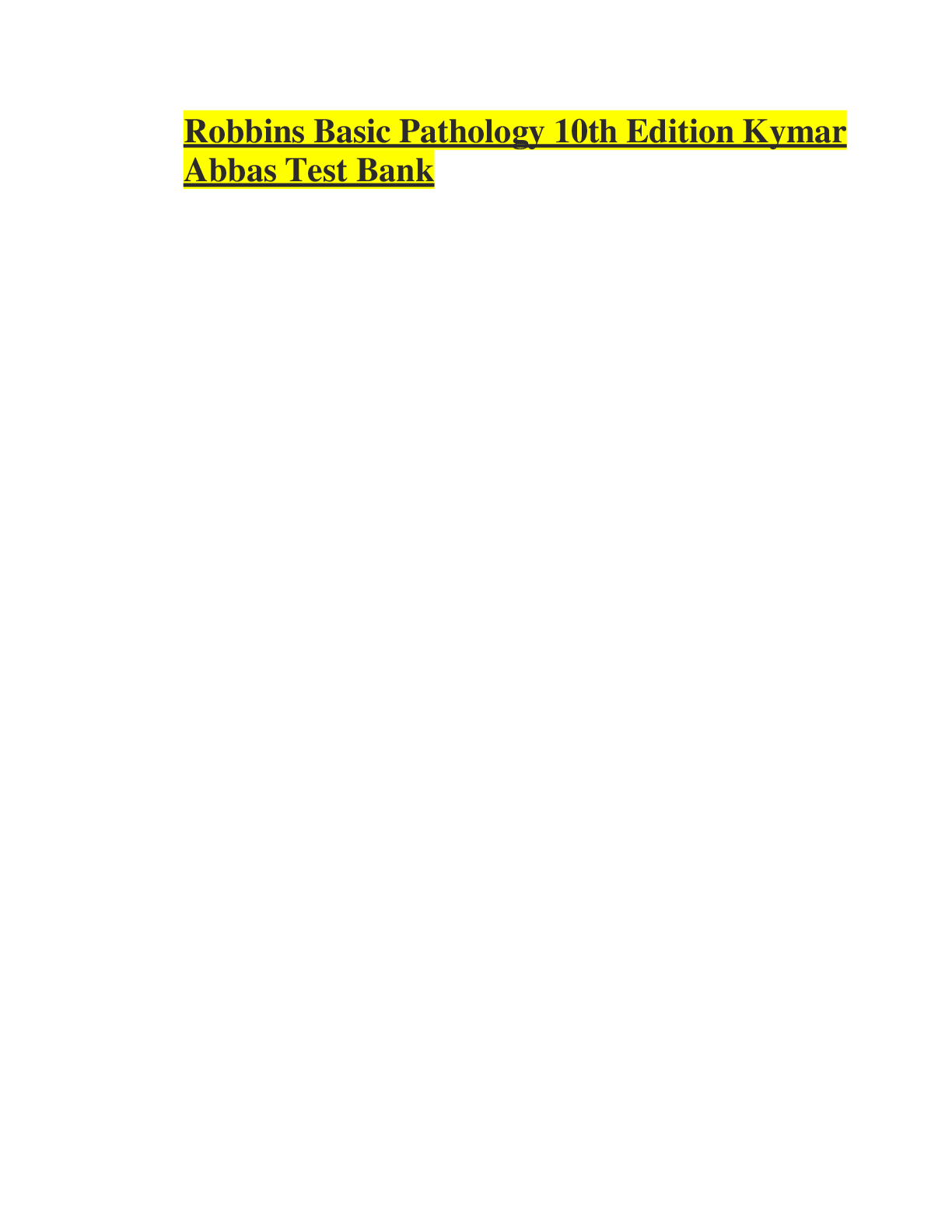


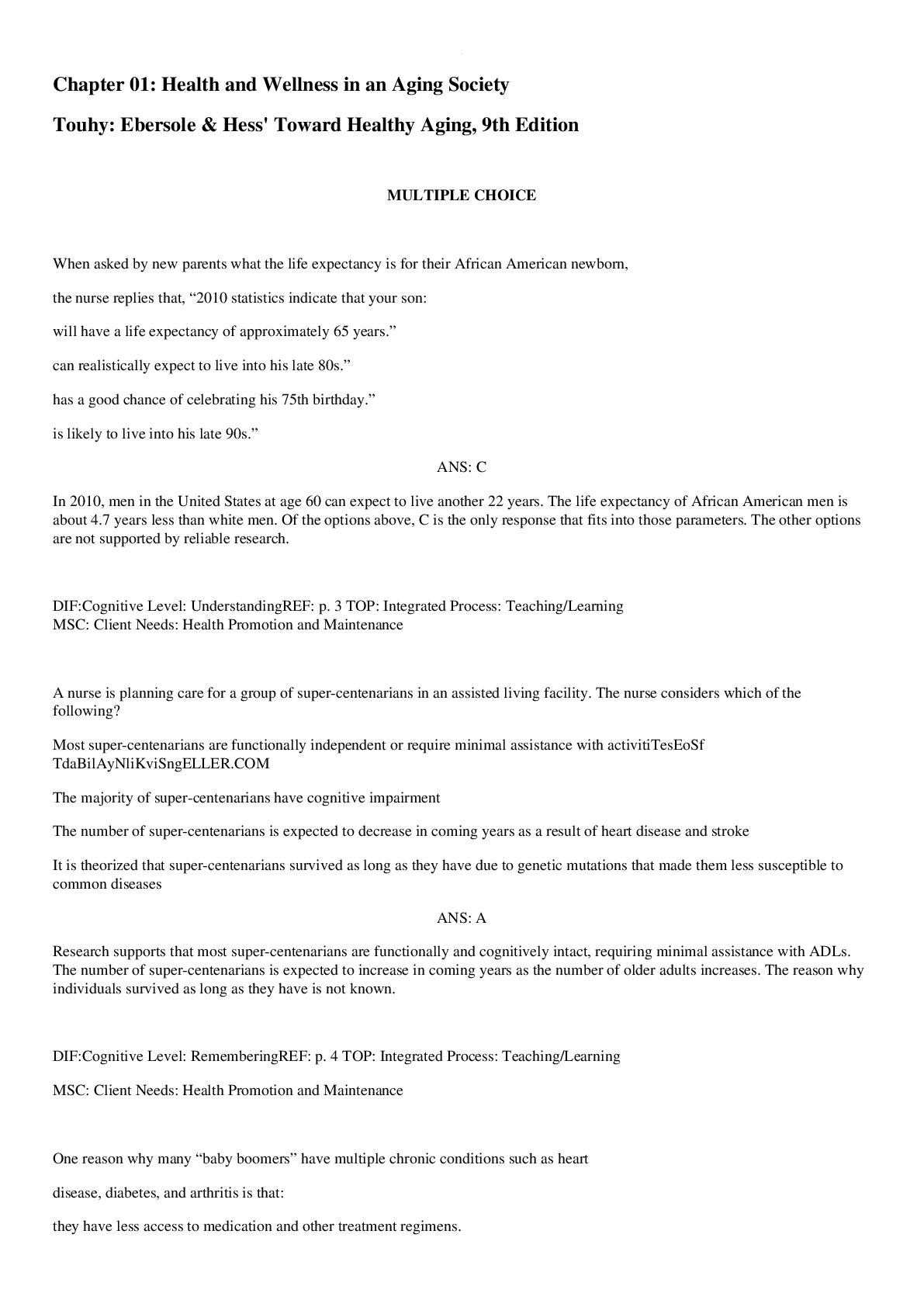
.png)

